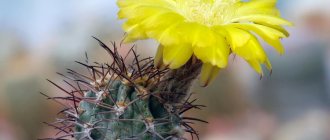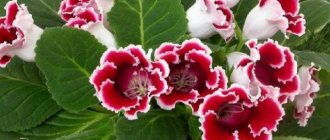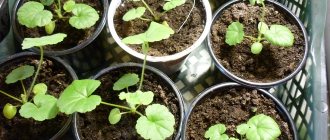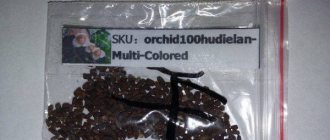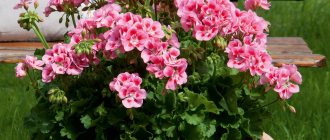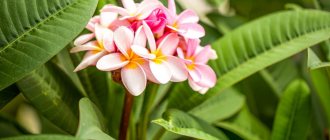One of the most exciting hobbies is growing rhododendrons from seeds. They grow extremely slowly in the first years. If you choose the right soil composition, they do not create any problems: the seeds germinate easily, amicably, and stably; seedlings do not get sick.
Rhododendron seeds look like tiny dust, a little smaller in some species, a little larger in others. They do not require stratification. It is necessary to pour acidic peat (preferably not too coarse) into a container with drainage holes and moisten it, the seeds are evenly scattered over the surface, carefully sprayed with a spray bottle so that they are not blown away. Arcs are placed on the container and covered with film, or a transparent removable high lid, if it is a mini-greenhouse. Next, for about two weeks, you should ventilate the crops daily for 30 minutes, and also spray as necessary. Shoots will appear. If they are too thick, they can be picked straight away, but this is usually not necessary. It is important to ensure that mold does not appear on the surface of the soil and to continue to ventilate the seedlings. When new shoots stop appearing, you should gradually increase the ventilation time, accustoming the rhododendrons to normal humidity. If the room is too dry, you can leave the film on or spray the seedlings daily.
Rhododendron seedlings in the correct substrate are not too afraid of waterlogging or drying out of the coma, but it is undesirable to allow either one or the other. If the watering schedule is incorrect, or if the air is too dry, they can be affected by spider mites - this is a clear sign of very poor living conditions. Rhododendrons do not like too hot sunlight; on a south-facing window, in the very sun, it is better to protect them with a sheet of thin paper.
I plant rhododendrons as they grow in separate cups. The composition of the soil is the same. You should very carefully accustom them to the street air, be sure to protect them from excess sunlight, especially during their first street “walks”, as well as after transplants. It is better if they are shaded from the south, including in winter and spring.
- Rhododendron Daurian
- Rhododendron golden
- Canadian rhododendron
- Rhododendron katevba
- Lapland rhododendron
- Rhododendron Ledeboura
- Rhododendron acuminate
- Rhododendron podelnikovy
- Rhododendron Fori
- Rhododendron Schlippenbach
Rhododendron Daurian
Rhododendron dauricum L.
Winter-hardy, moderately drought-resistant shrub, growing on rocky slopes under the canopy of coniferous trees. In snowy places it weathers out. [Z. I. Luchnik, T. N. Vstovskaya]
Grown according to the general scheme. In the second summer, the seedlings looked like this:
PC19 Dahurian rhododendron Rhododendron dauricum L.
For the third summer:
PC19 Daurian rhododendron for 3 years
First winter
In winter, it is advisable to keep containers with seedlings at a temperature no higher than +10°C. If this is not possible, then you can choose the coolest place on the windowsill, closer to the glass, and isolate young plants from the central heating radiators to create a more uniform temperature regime. The intensity of watering in winter must be reduced to prevent the earthen ball from drying out, and a container of water can be placed next to the seedlings to humidify the air. Feeding must be stopped until March, and illumination must be continued, increasing the length of the day to 10 hours.
You can winterize in the dark, but in this case the temperature must be reduced to +2+4°C, and watering can be stopped completely, preventing the soil from drying out. After completing such wintering, it is necessary to gradually accustom the plants to light and higher temperatures. Overwintering seedlings in a cool place helps to harden young plants and makes them more resistant to spring temperature changes.
Wintering seedlings in open ground is more effective. To do this, in the warmest corner of the garden, they dig grooves up to 40 cm deep, install boxes with seedlings in them and, when frost sets in, make a breathable, dry shelter. When wintering seedlings this way, it is desirable to have a stable snow cover, otherwise the shelter needs to be increased. The shelter must be removed gradually after the lower temperature values have reached at least 0°C. Short-term temperature drop to -1 °C. young plants of winter-hardy species are not afraid.
Canadian rhododendron
Rhododendron canadense (L.) Torr.
They were sown according to the general rule. The seedlings of all rhododendrons are incredibly small. To make them visible, we had to increase the green color saturation when processing the photo. Here is a photo to understand the scale:
PK131 Canadian rhododendron shoots from seeds
And here's a close-up of the same photo:
PC131 Seedlings of Canadian rhododendron close-up
They grow slowly. I drink it in 150 ml cups for a month or two, and transfer it to larger containers in the fall of the first year or in the spring of the second, after a good winter. The problem with wintering small seedlings is that they are squeezed out of the soil by frost and in the spring it is necessary to find and return all the “fugitives” to their place.
Treatment of containers, seeds before sowing and marking of crops
A few words about another important point - maintaining maximum cleanliness when preparing for sowing and during the sowing process . I treat the prepared containers in a solution of chlorine bleach (“Whiteness”) or in a strong solution of potassium permanganate for half an hour. Then I rinse thoroughly with boiled water. If bleach was used, it is helpful to leave the containers for a day to allow the chlorine smell to disappear. It is advisable to first sterilize the prepared substrate (steam, microwave). It is better to pour boiling water over the peat tablets, having first laid them out in one layer in a heat-resistant tray, then cover with a lid and wrap for an hour or two to maintain the temperature longer.
You also need to take care of marking the crops . To know which type of rhododendron is sown in a particular container, you can write the name of the species or a conventional number on the wall of the sowing container with an indelible and non-fading marker. In addition, it is convenient to write the information you need with a simple pencil on a special plastic tag or squeeze it out with a ballpoint pen on a thin aluminum strip.
Rhododendron katevba
Rhododendron catawbiense Michx.
The seedlings were transplanted into larger bags in the fall of the first year, and after wintering they looked like this:
PC16 Rhododendron catawbiense Michx.
For the third summer:
PK16 Rhododendron katevba for 3 years
Lapland rhododendron
Rhododendron lapponicum (L.) Wahlenb.
Lapland rhododendron seeds close-up (1 ruler division - 1mm):
PK657 Lapland rhododendron seeds
Rhododendron shoots appear quite quickly, within a couple of weeks. They are very small, only with the help of very good photographic equipment can you take a frame in which they will be visible:
PK657 Lapland rhododendron shoots from seeds. The height of the shoots is 3 mm or less.
What seed material looks like: description and photo
The azalea seeds are contained in a five-leaf fruit that appears after flowering has finished. The seed box opens from bottom to top. The shape of the seeds resembles long and oblong sticks with a size of 0.5-2 mm. The color of azalea seeds is dark brown, closer to black.
The following is a photo of azalea seeds:
Rhododendron Ledeboura
Rhododendron ledebourii Pojark.
A local Altai species, it is called here “maralnik”. It’s difficult to say why - maybe because it grows on steep cliffs, where only deer can climb?.. I can’t resist quoting from the book by Z. I. Luchnik describing the natural habitats of the Ledebur rhododendron:
In “Flora of the USSR”, rhododendron, which lives in the Altai Mountains, in the Western and Eastern Sayan Mountains, as well as in the northwestern part of Mongolia, is described as an independent species [ separated from Daurian rhododendron, my note ], distinguished by larger flowers and small elliptical evergreen leaves , while in the Dahurian rhododendron all leaves, with the exception of a few apical ones, fall off in the winter. The ecology of Rhododendron Ledebur is unique. It grows in both humid and arid regions, on open rocky mountain slopes, on rocky banks of mountain rivers and as undergrowth in pine and deciduous forests, rarely in spruce forests on large hummocks (Buryat Autonomous Soviet Socialist Republic); in the mountains it rises to the lower part of the alpine belt. Everywhere its habitats are associated with rocky soil or sandy loam deposits in mountain river valleys. In the vicinity of Gorno-Altaisk, surrounded by humid forests (with 705 mm of annual precipitation), rhododendron is found only on steep slopes among the forest. In the less humid and little snow region of Chemal (514 mm) in the valley of the river. Katun rhododendron Ledeboura grows in huge quantities along all southern rocky slopes. Higher along the river valley. Katun, in the arid region of Yaloman (232 mm), Ledebur rhododendron is found in extensive thickets along the northern slopes, overgrown with a low moss cover.
From this description it is clearly seen that this rhododendron is unlikely to be in danger of freezing. At the heights in the Yaloman region, the climate is as harsh and unattractive as one can imagine. It is paradoxical that the introduction of this species into culture is associated with numerous difficulties. For Rhododendron Ledebur, it is necessary to create the illusion of its native harsh places - rocky slopes with little snow in winter, covered with acidic peat.
I grow seedlings of this species, like others, in 100% acidic peat and, apart from the problem of squeezing them out of the ground in winter, I have not noticed any other difficulties, but my Ledebur rhododendrons are still too small.
A month after the emergence of shoots, I dive into cups. Seedlings grow somewhat faster than other species:
PC214 Seedlings of Rhododendron Ledebur - the first true leaf
By autumn, Ledebur rhododendron seedlings have reached quite a respectable 10-12 cm:
PC214 Rhododendron Ledebura in the fall of the first year
Fresh air
They begin to take the seedlings out into the fresh air from the end of May, since weather conditions have completely stabilized and there is no reason for concern. Initially, it is necessary to carry out short “walks”, and then increase their duration. The main thing will be to choose the right location in your garden, since this place should be secluded not only from drafts, but also from direct sunlight. Experienced gardeners recommend replanting the seedlings again, because it is believed that the transshipment method is the most optimal and will help enrich the soil and provide the plant with “fresh nutrition”. When the plant has fully adapted to the new place, after 20 days you can feed it for the first time with complex fertilizer of mineral elements. By autumn, the plant grows up to 20 cm and overwinters successfully, but at home. On average, after 3-4 years you can count on a full transplant into open ground to a permanent habitat. Some varieties can even immediately give their owners abundant flowering.
Rhododendron acuminate
Rhododendron mucronulatum Turcz.
Another species close to Daurian rhododendron. Differs in less frost resistance than Ledebur's rhododendron, but is slightly less capricious in cultivation; Z.I. Luchnik grew well on rocky hills with a topping of acidic high-moor peat.
With rhododendron acuminate, I decided to try a new method of picking - in a common container, and not in separate cups. The advantages are obvious: saving space, less drying out. The disadvantages will appear when you need to plant seedlings with a delicate root system:
PK424 Rhododendron sprouts
How to care for a beautiful perennial
When caring for it, it is important not to forget that the shrub loves, otherwise everything is quite simple:
- After planting, do not forget to mulch the tree trunk with bark, sawdust or needles of pine and other similar crops. This will help retain moisture, and pine litter will maintain the desired acidity.
- Water frequently in summer, spring and autumn - at least once a week. Use only soft water; you can periodically (once a month) acidify it with lemon juice or acid.
- At the beginning of the growing season, before flowering, feed with organic matter (humus, manure). After flowering and in the fall, closer to October, apply fertilizer two more times, but this time with a special complex for rhododendrons. It can be bought at any flower shop.
- Let the bush bloom, because it does this very early, and then you can start shaping it. Trim dry and damaged shoots, but do not touch young shoots. You can shorten long branches so that they do not get out of the crown. The second shaping can be done in the fall.
Features of wintering
Adult rhododendrons overwinter well and without shelter. This species can withstand frosts down to -26 °C and even soil freezing down to minus -5 °C. In the south, only young specimens need to be covered for the winter. In colder regions, where the temperature drops below these values in winter, it is better to cover the perennial.
To protect the roots, additionally mulch the tree trunk circle with a thick layer of sawdust. And to avoid freezing of the shoots, pull them into a bundle, set up something like an arch and cover them with burlap. You can also lay spruce branches on top, if you have them.
Rhododendron Fori
Rhododendron fauriei Franch.
Grown according to the general scheme, in the second year it looked like this:
PC17 Rhododendron fauriei Franch. from seeds
For the third summer:
PC17 Rhododendron Fori for 3 years
